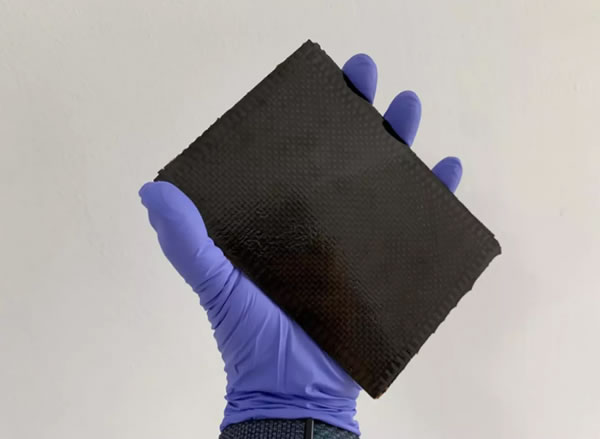According to foreign media New Atlas reports, carbon fiber composite materials may be very light and strong, but their flame resistance has always been a problem. But now, Korean scientists have discovered that a plant-derived substance not only prevents them from burning, but also makes them easier to recycle. In the past, in order to make the carbon fiber composite material flame resistant, people added halogen to the carbon fiber composite material. However, because toxic substances are produced when the incinerated materials are recycled, they are eventually banned worldwide. During the incineration process, the epoxy resin in the composite material is burned, leaving only fragments of carbon fiber.

Under the leadership of Dr. Yong-Chae Jung, researchers at the Korea Institute of Science and Technology (KIST) recently tried to replace halogen with tannic acid. Tannic acid is a rich natural polyphenol produced by plants. When added to an epoxy resin, the acid improves the adhesion of the resin to carbon fibers. But more importantly, tannic acid will carbonize when it is exposed to the flame-this forms a carbonized layer on the surface of the carbon fiber, so that the oxygen in the flame cannot enter the material. Therefore, this composite material is both hard and flame resistant.

In addition, as long as the material is placed in water in a supercritical fluid state, it can be completely recycled-which means that the temperature and pressure of the liquid are kept above a certain critical level. The composite material will dissolve within tens of minutes after soaking, so that more than 99% of the fiber and resin can be recycled.
More importantly, the recycled resin can be used to produce carbon quantum dots, which are currently used in LEDs and organic solar cells.
"We have created a composite material with an expanded range of applications. Compared with traditional carbon fiber-reinforced plastics, it has significant improvements in flame retardancy, mechanical rigidity and recyclability." Dr. Yong-Chae Jung said. "These improved properties are significant because they determine the scope of application of the composite material."
A paper about the study was recently published in the "Composites Part B: Engineering" magazine.
Indoor LED lights have become increasingly popular for their sustainability and superior performance. These lights are designed to provide exceptional illumination inside enclosed areas, and come in various types including indoor ceiling lights, indoor flood lights, sensor light indoor, led spotlights, and more. Whether you want to add a cozy ambiance to your home or enhance the aesthetic appeal of your office, indoor LED lights offer a perfect investment. They are energy efficient, cost-effective, and have a long lifespan, making them an ideal choice for anyone who values sustainability and quality. With indoor LED lights, you can light up your space with ease and enjoy the benefits of having a well-illuminated and inviting interior.
Indoor Ceiling Lights ,Indoor Flood Lights ,Sensor Light Indoor ,Led Spotlights Indoor led ,indoor lights
Ningbo Le Monde Import & Export Co., Ltd. , https://www.zjlemonde-lighting.com